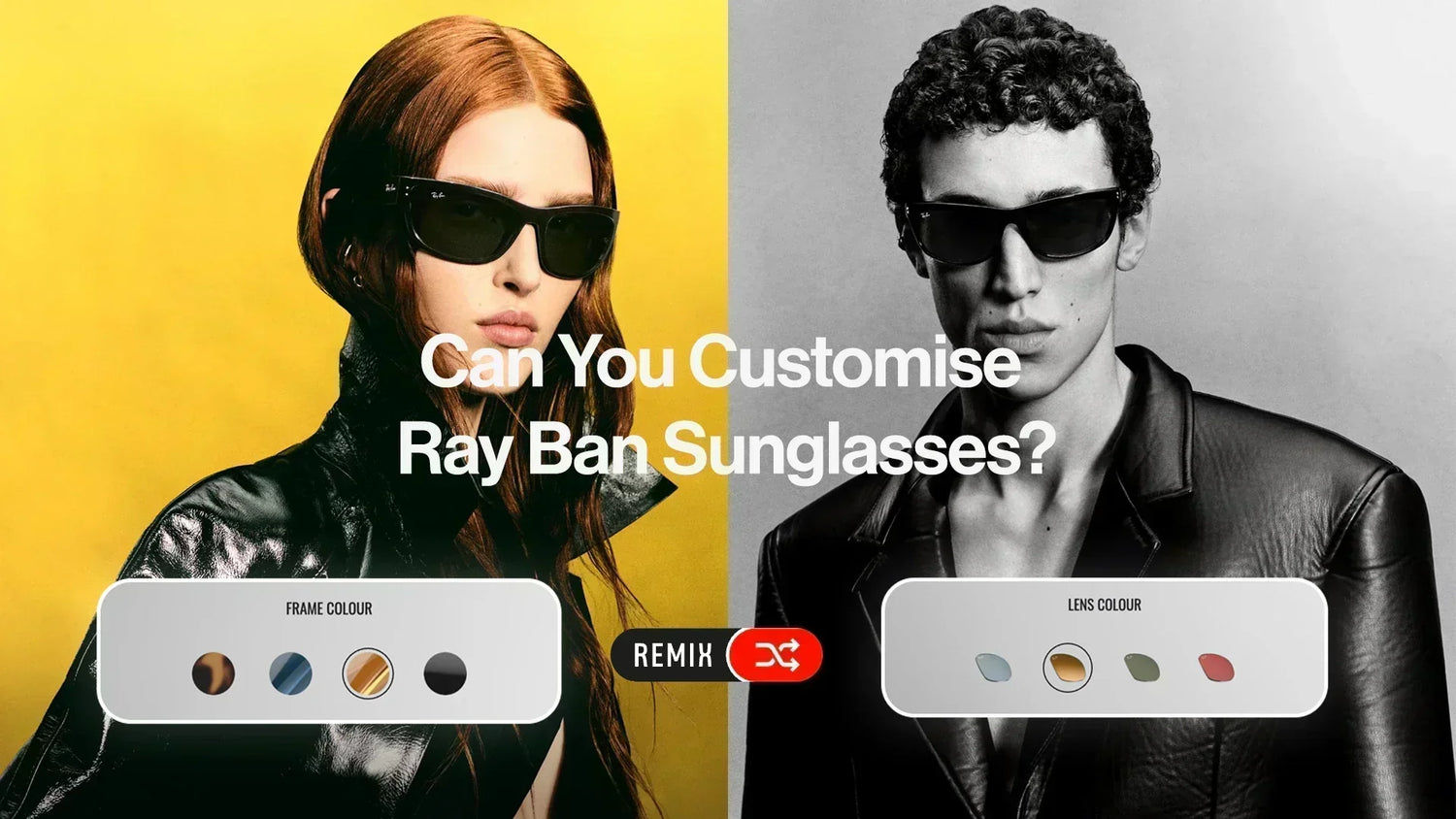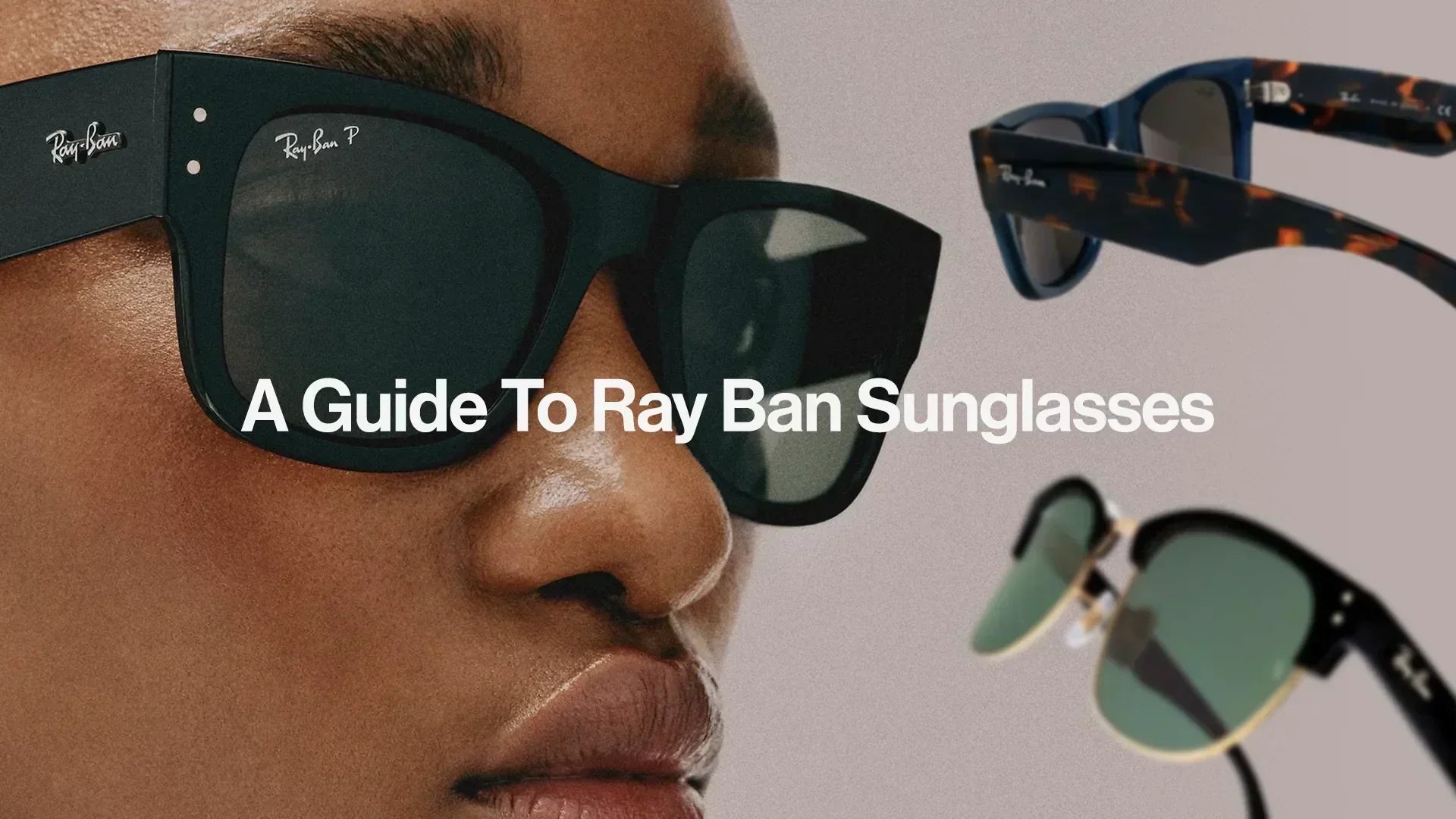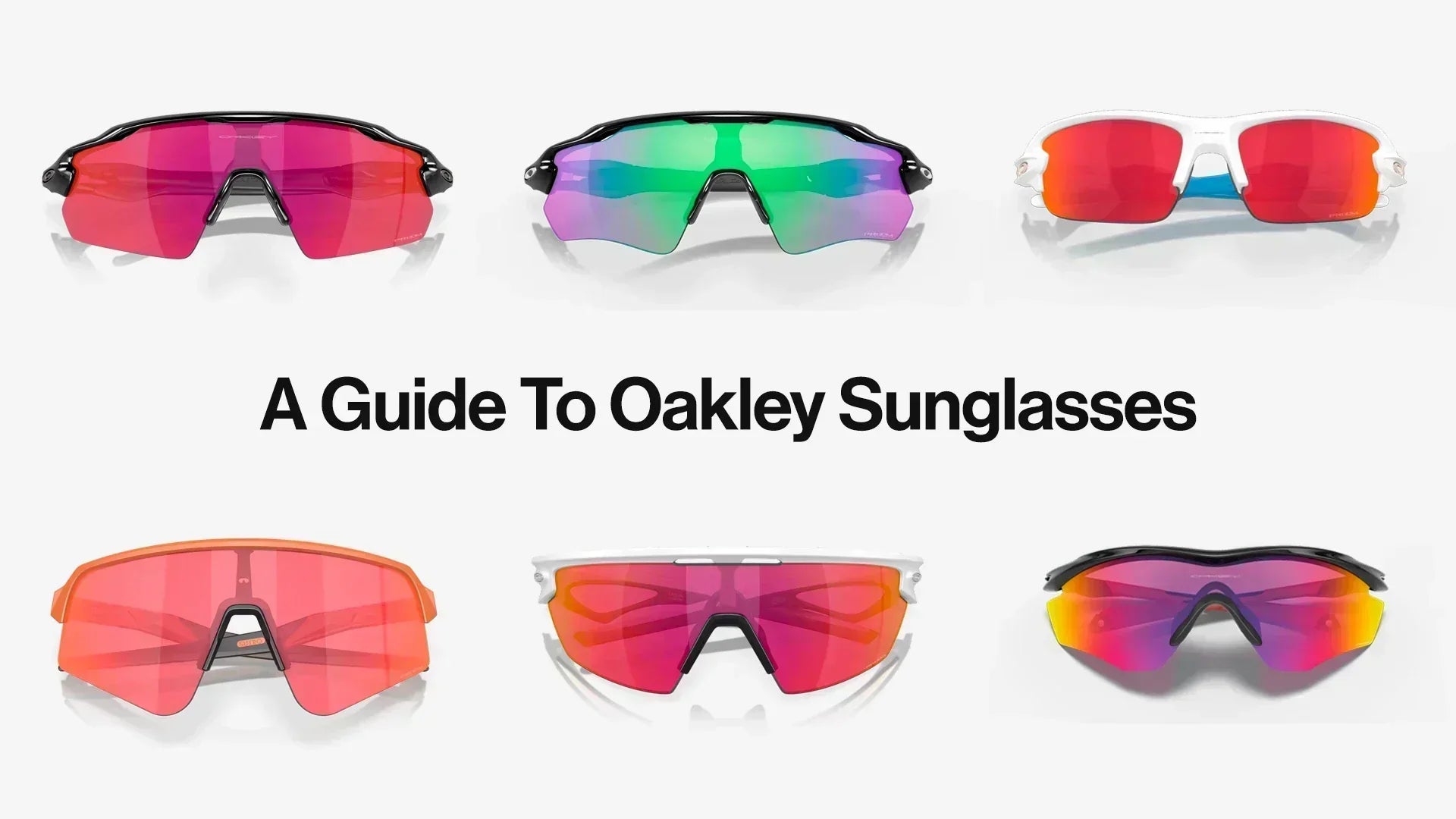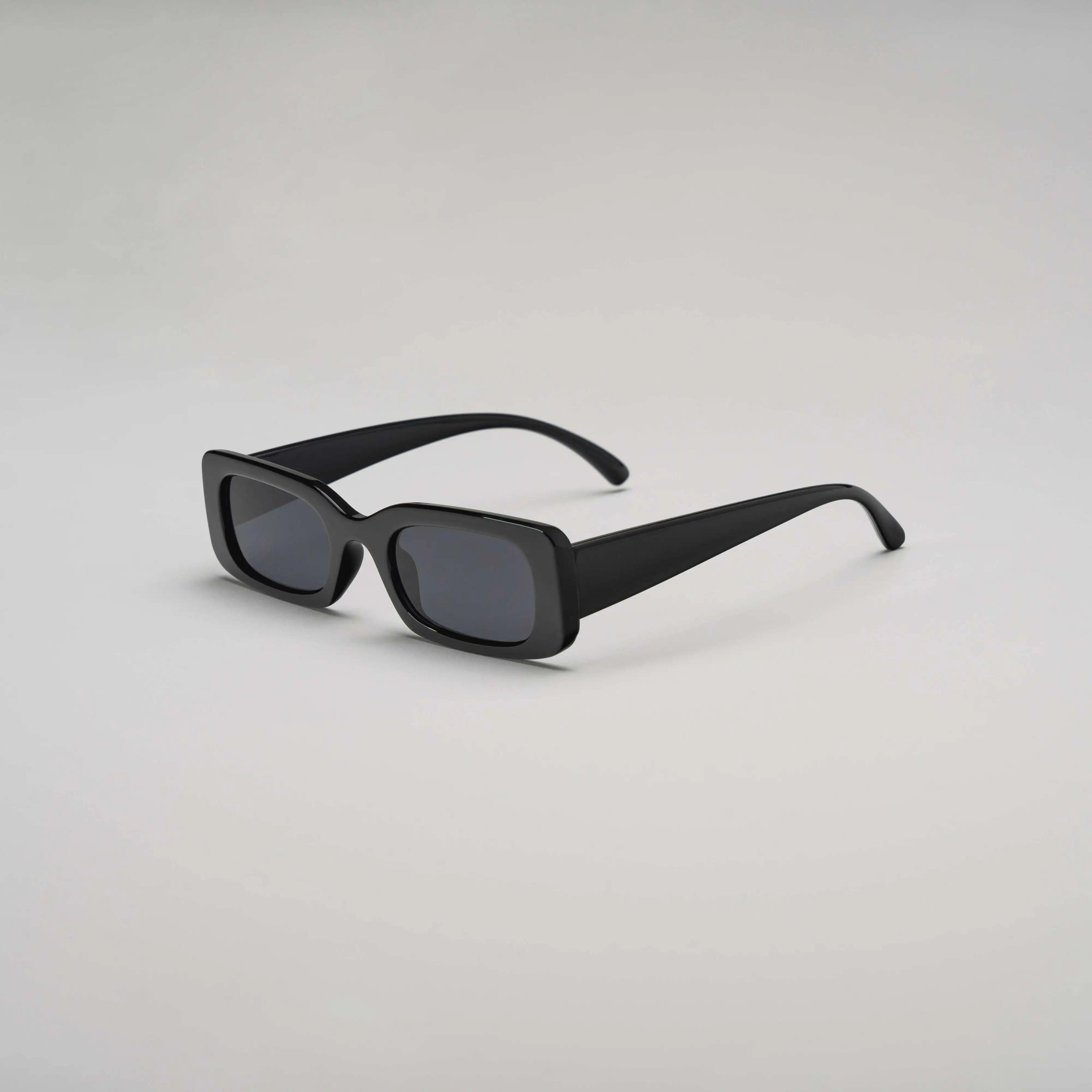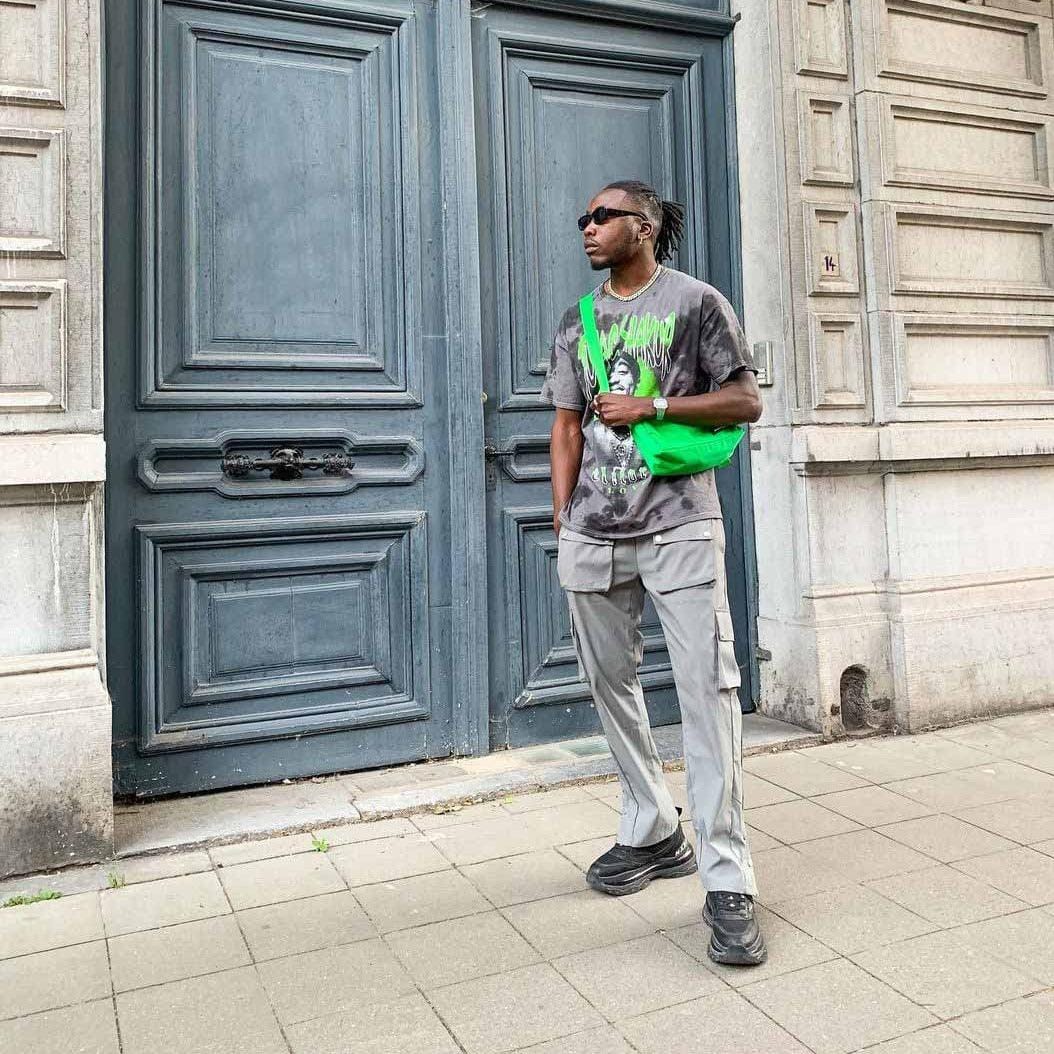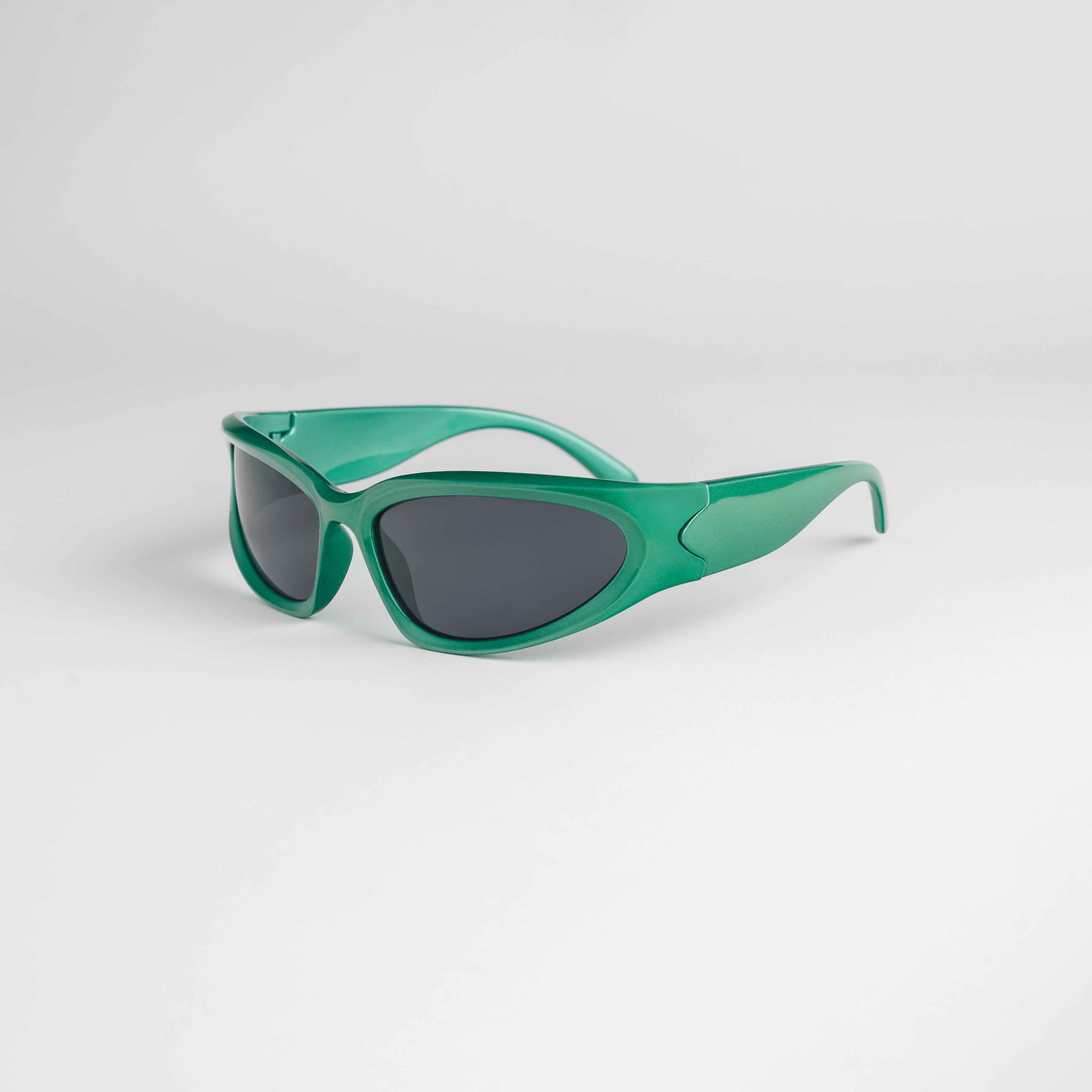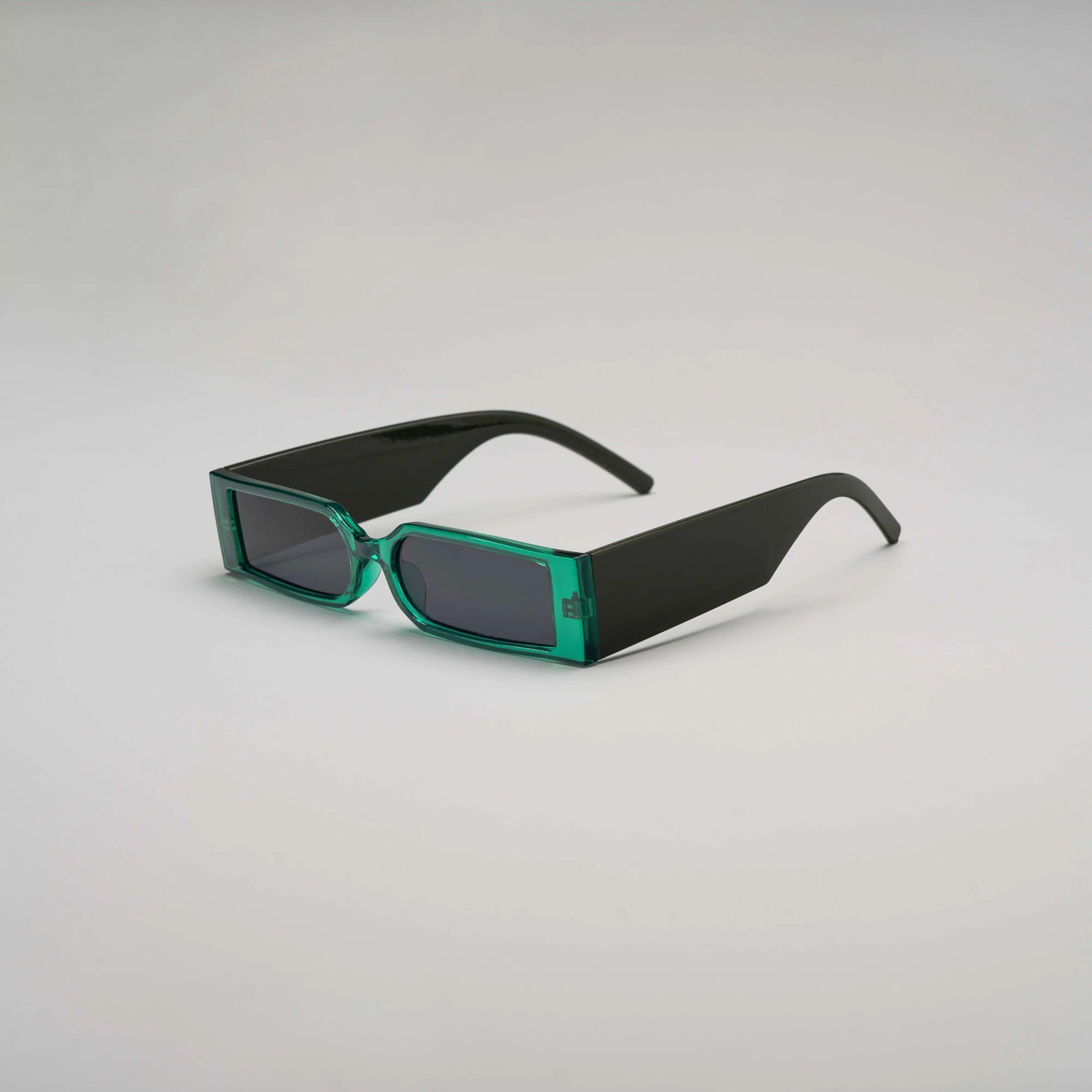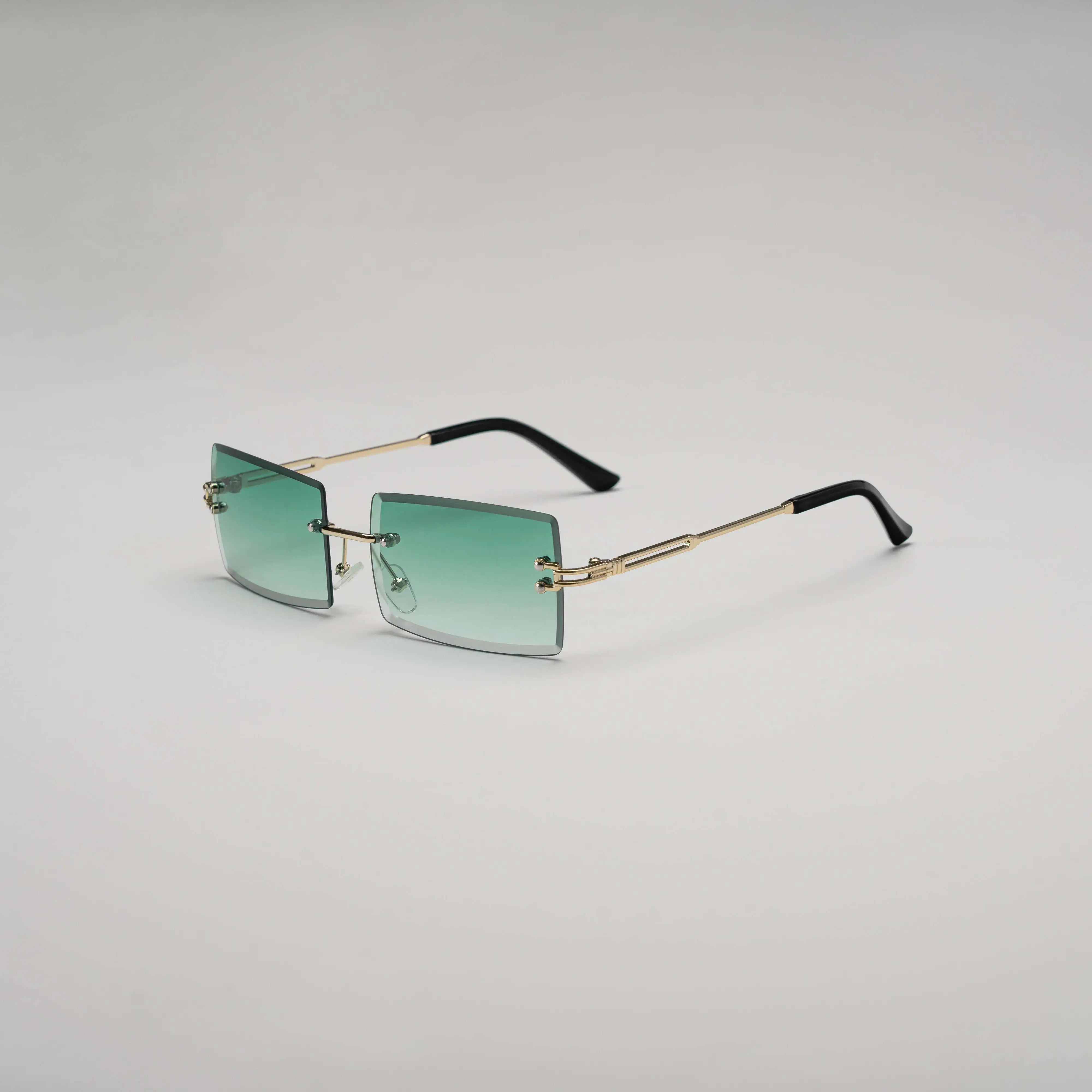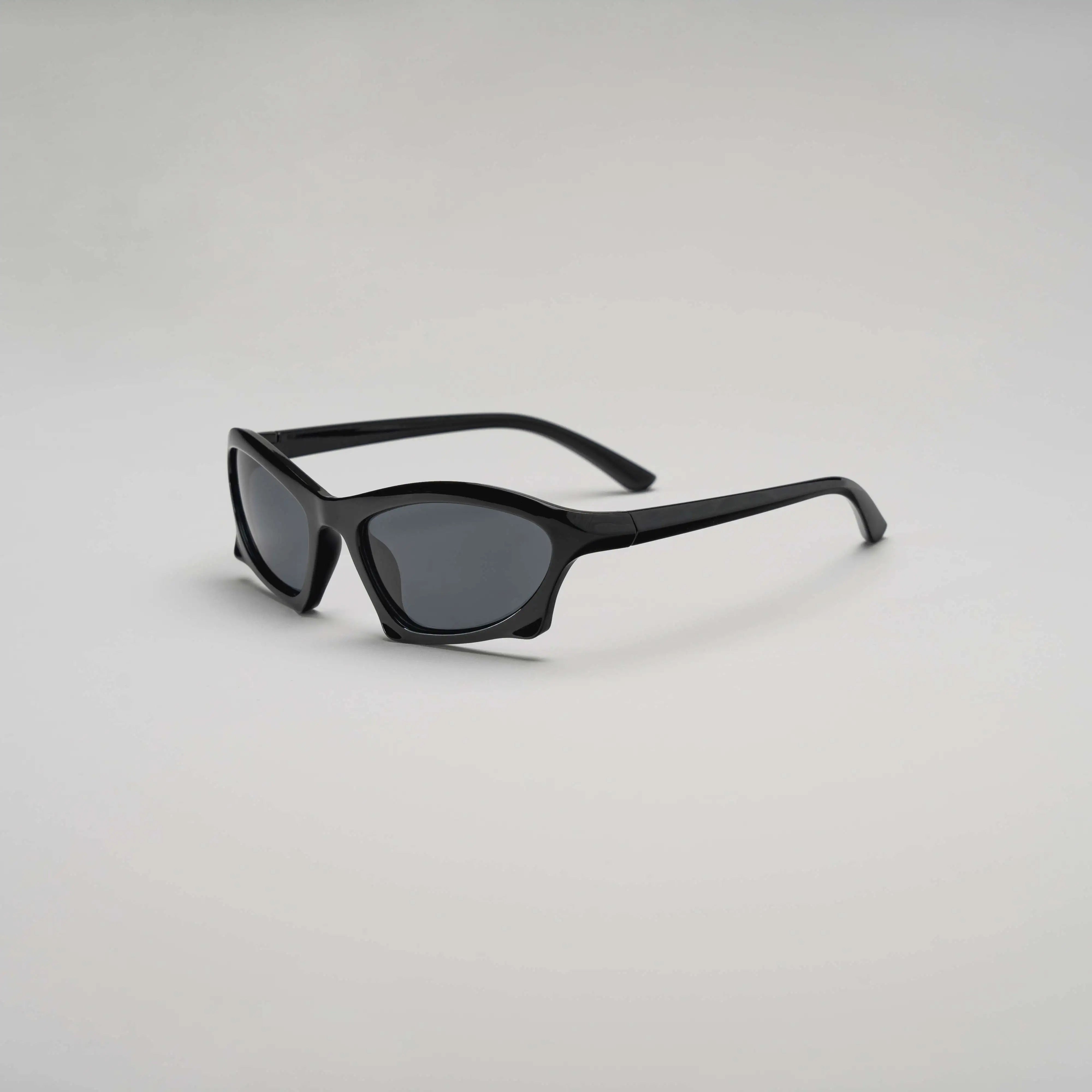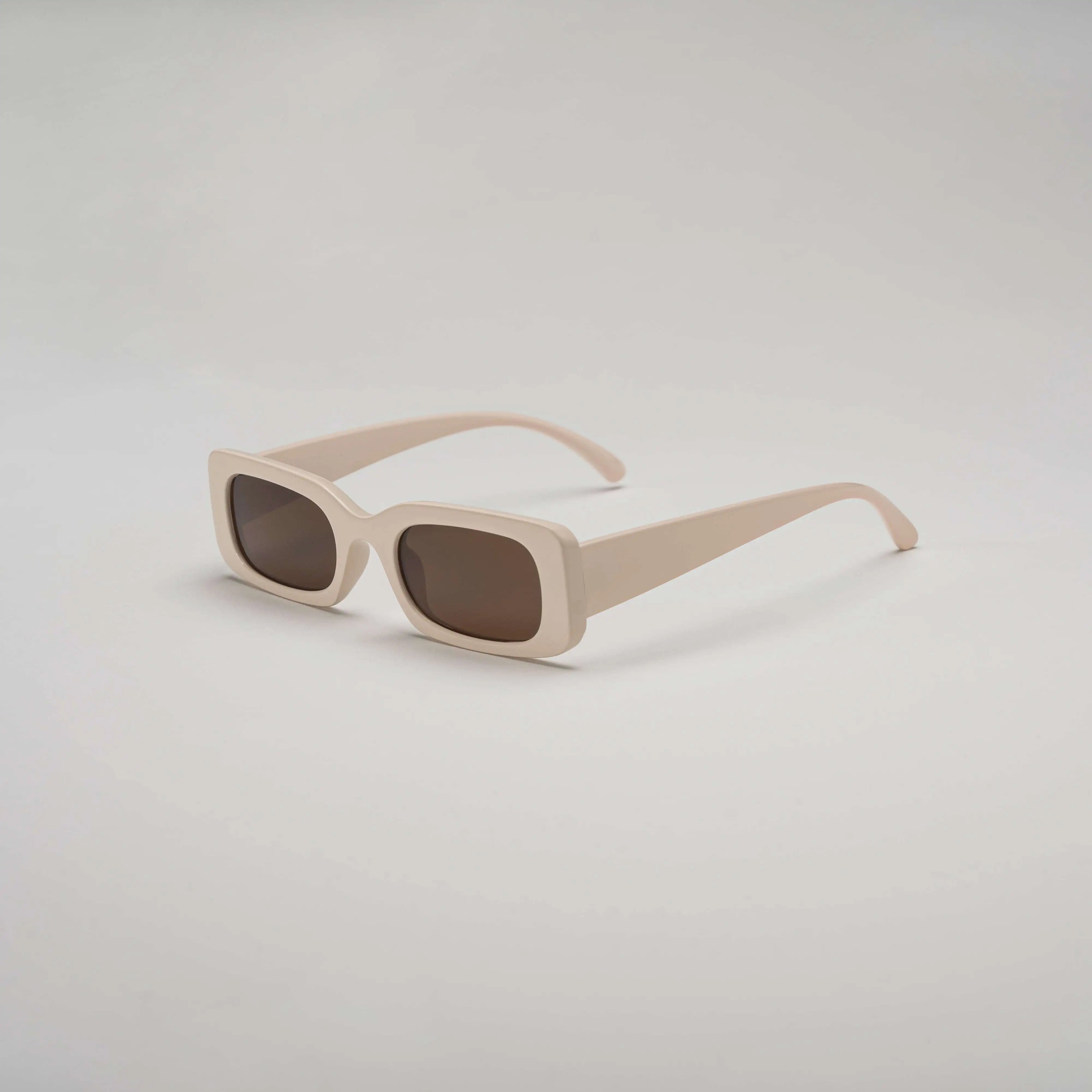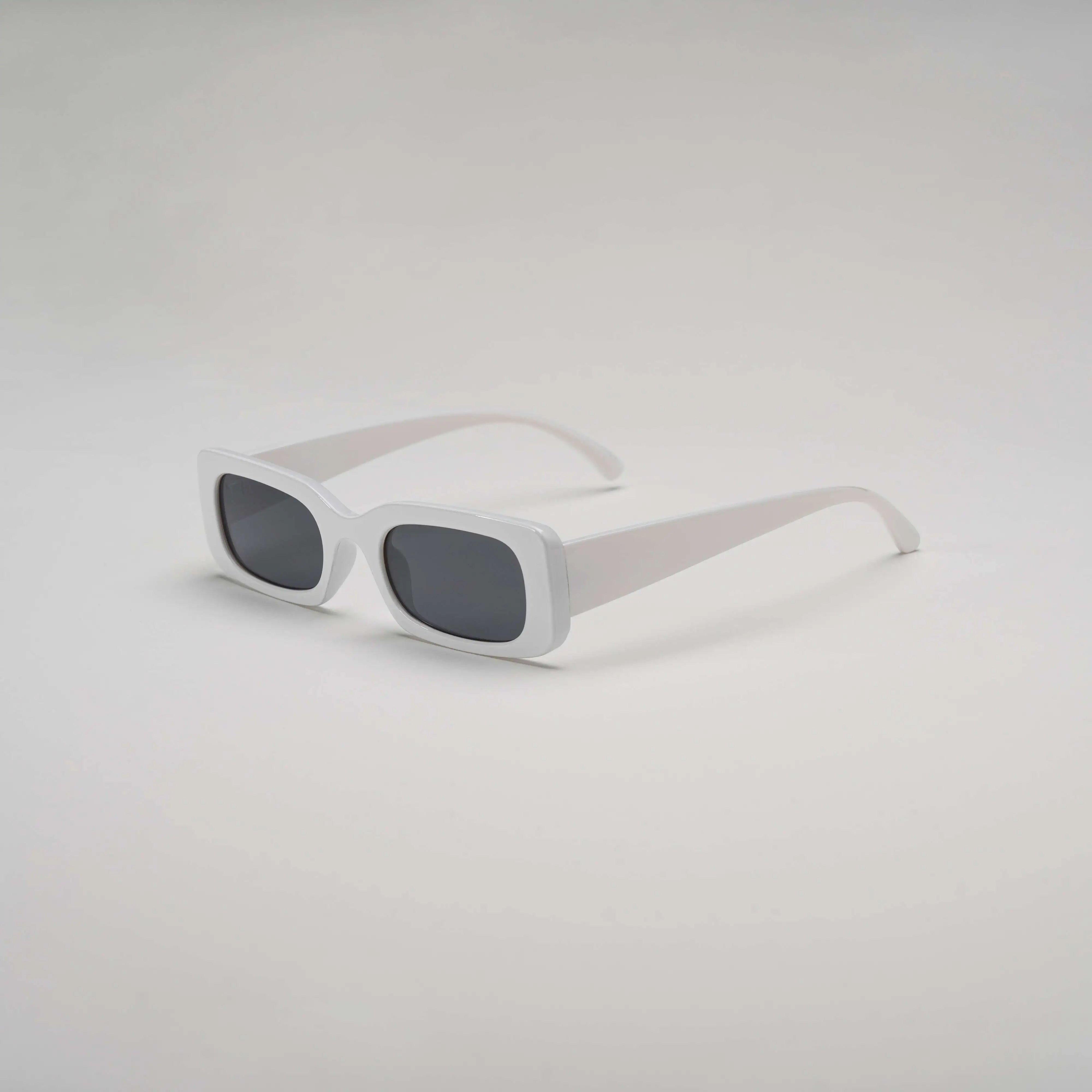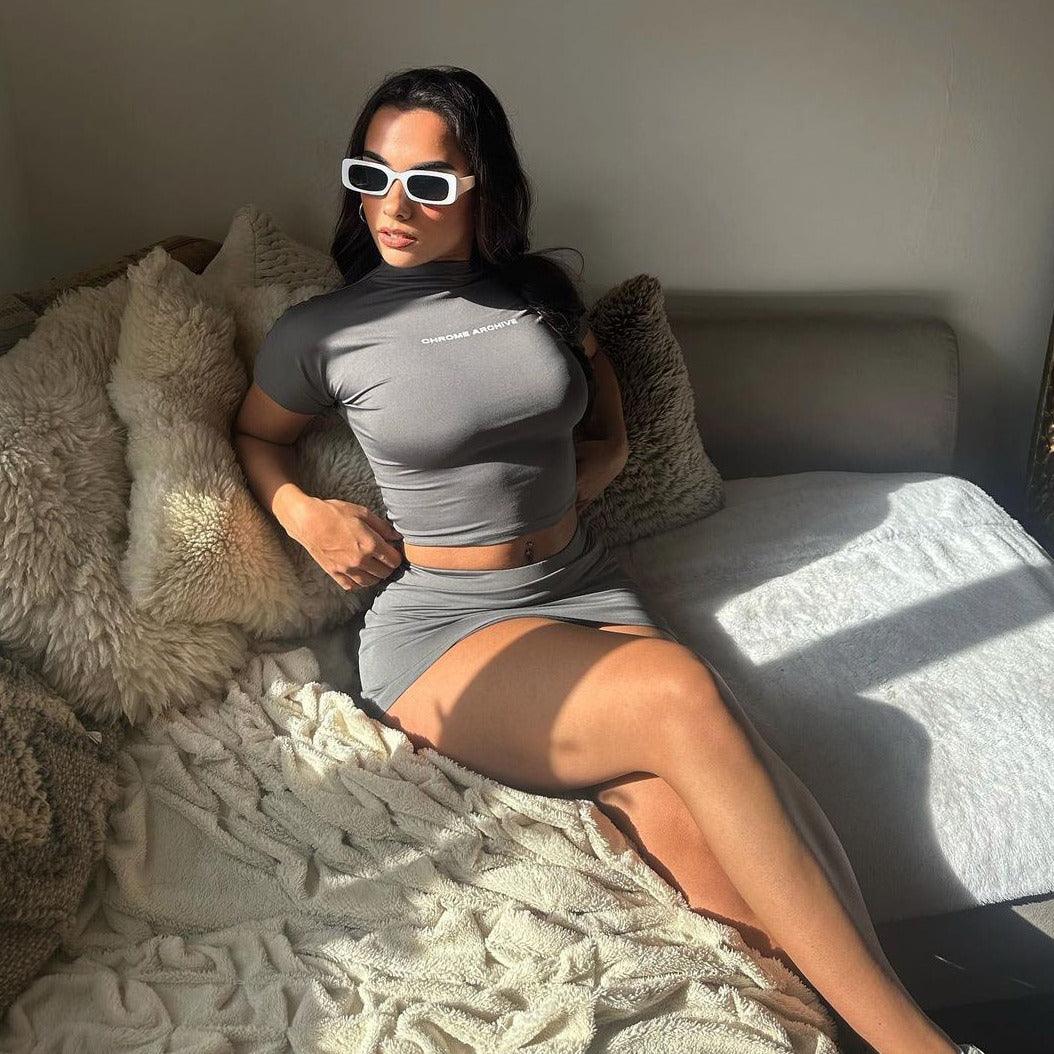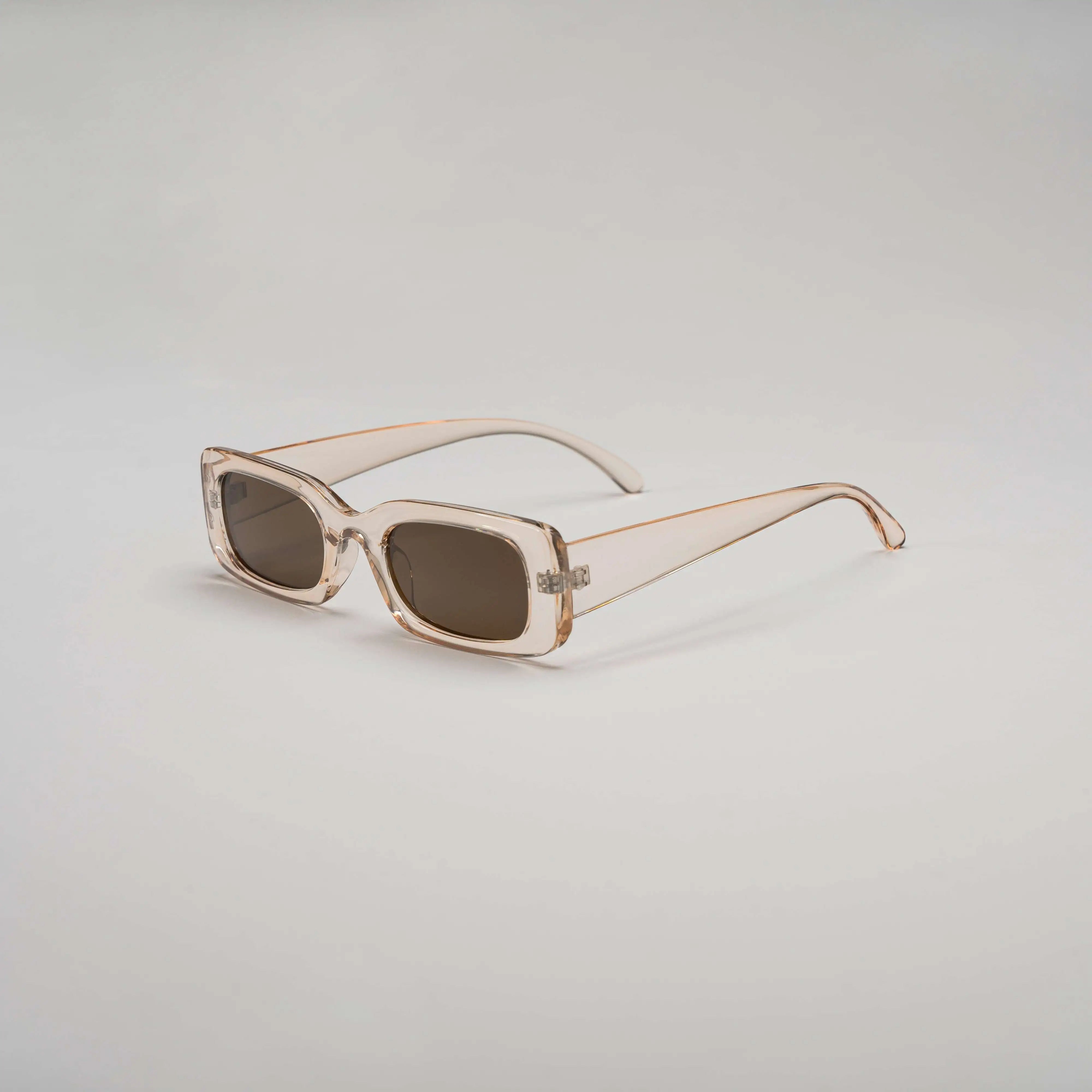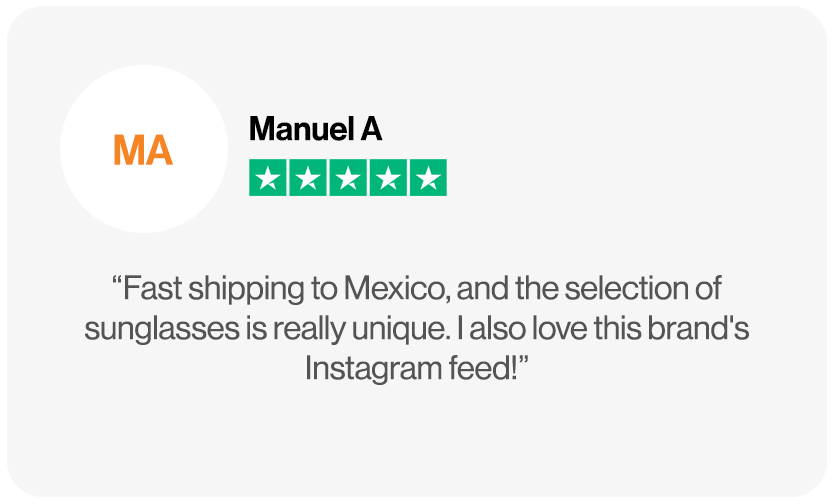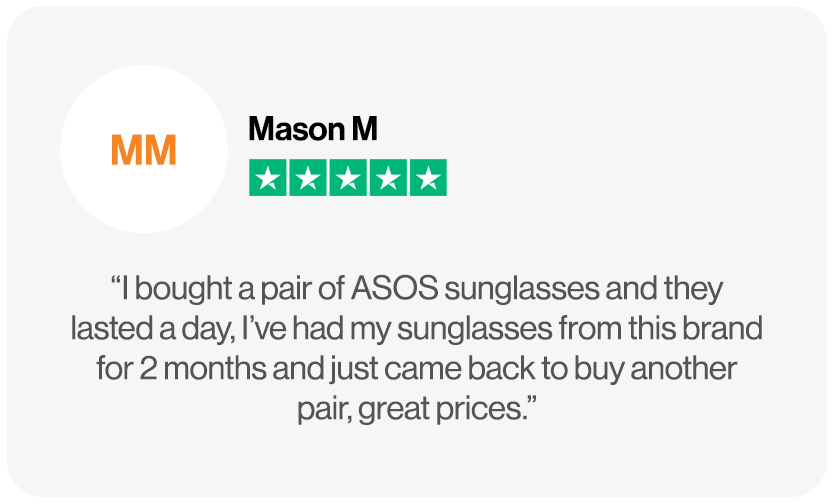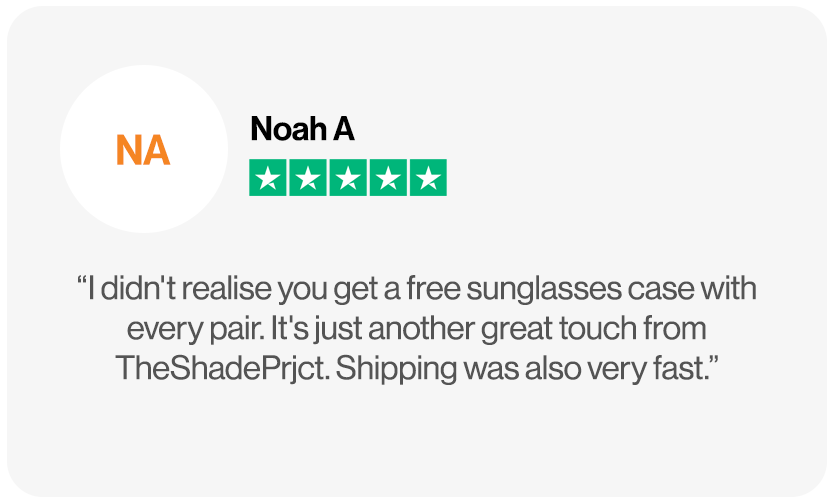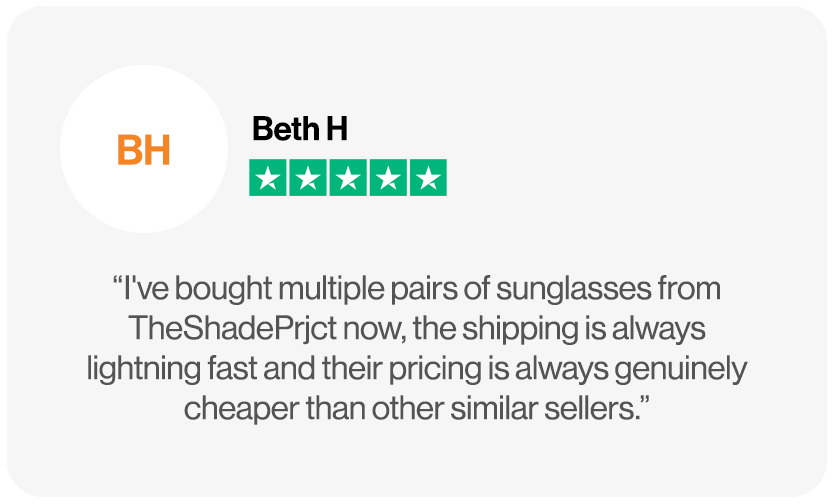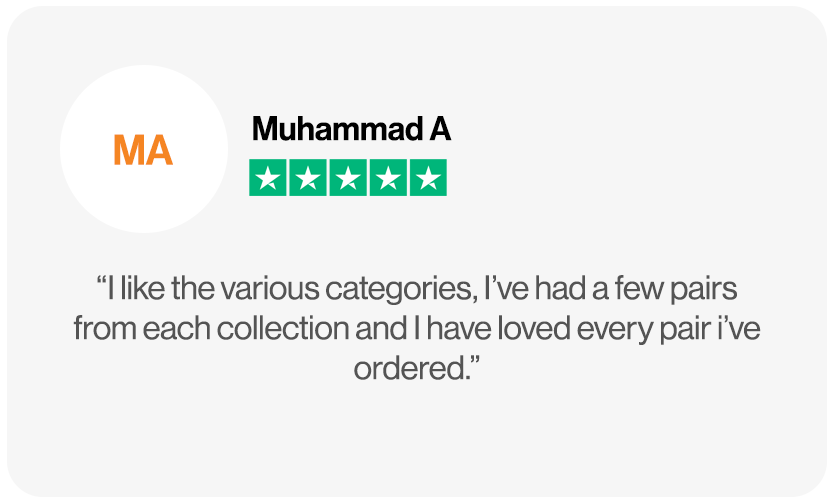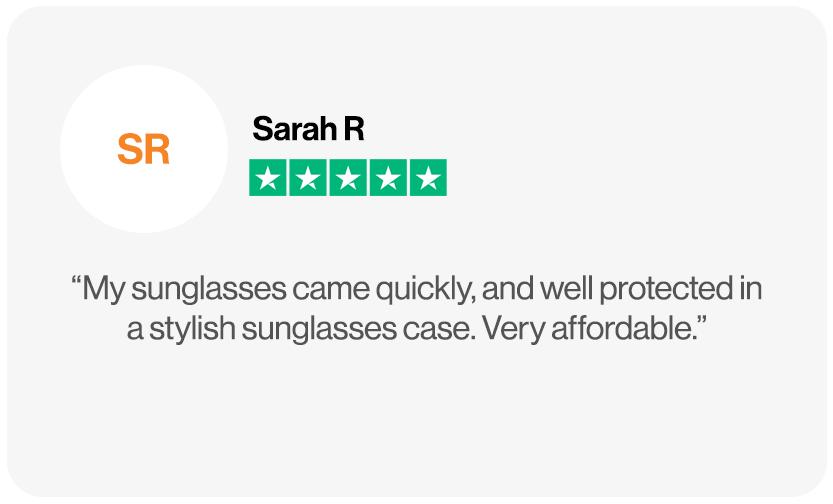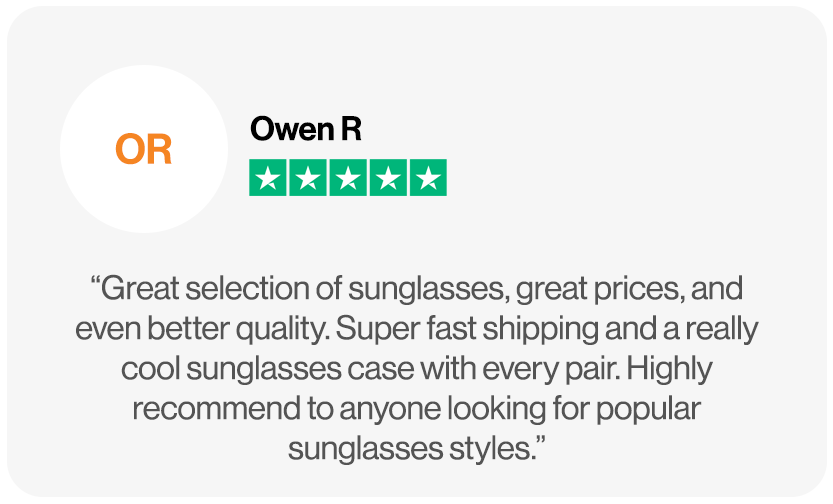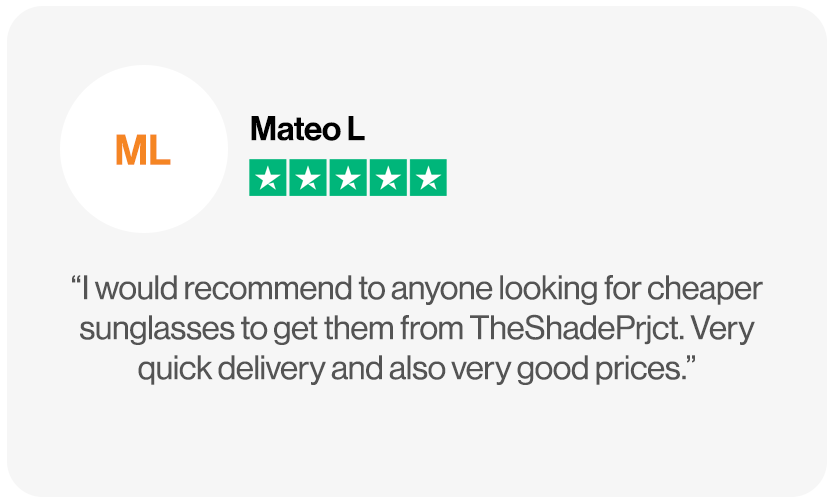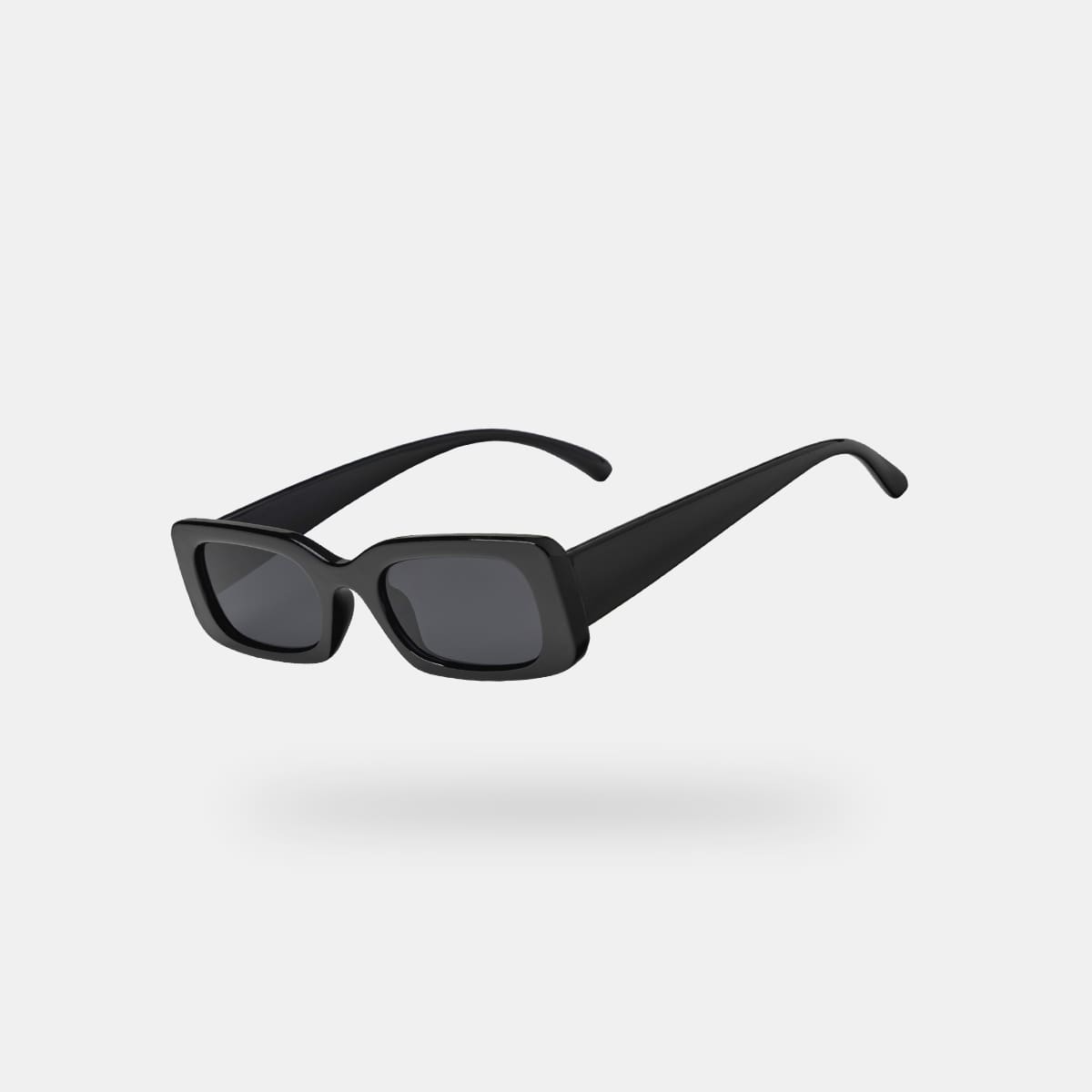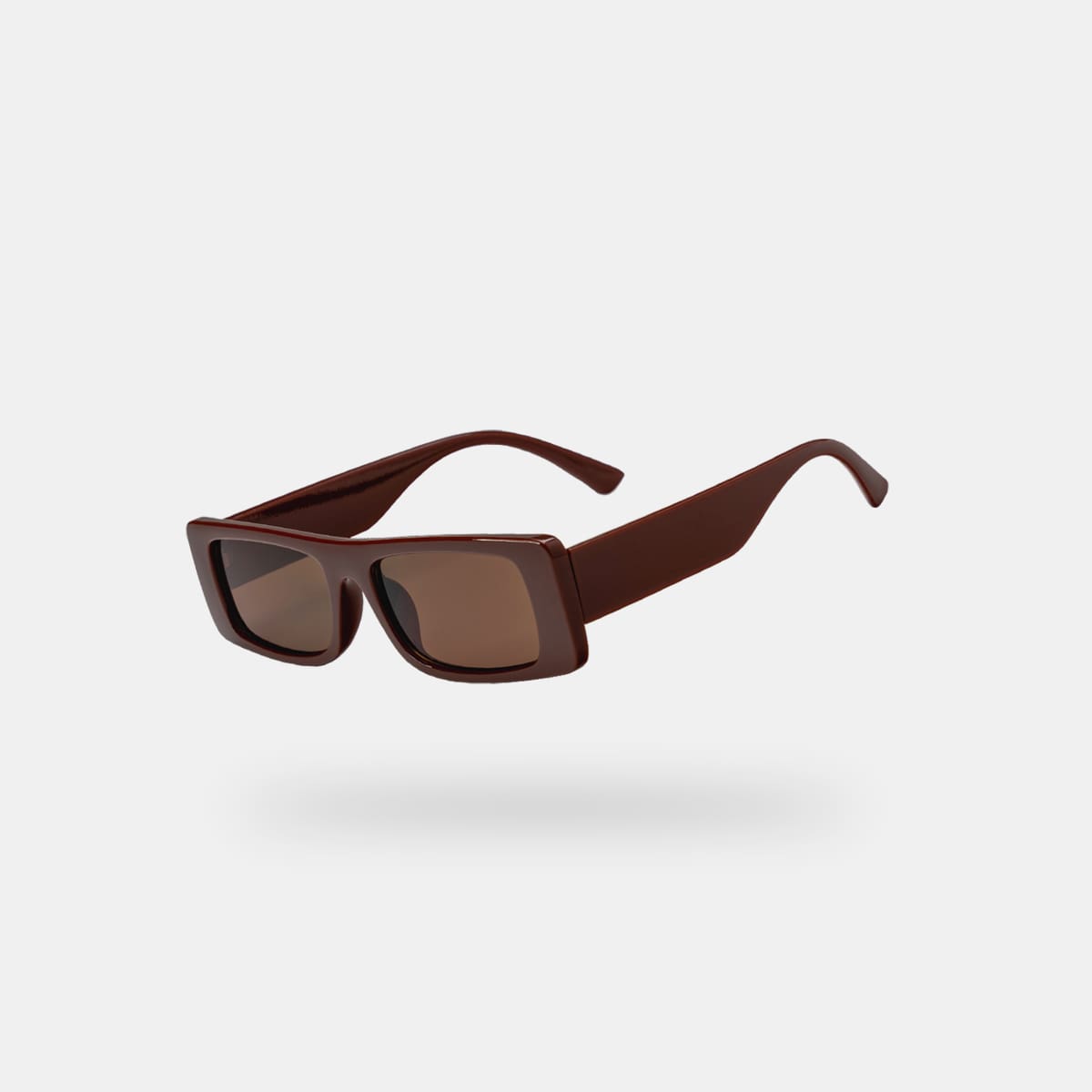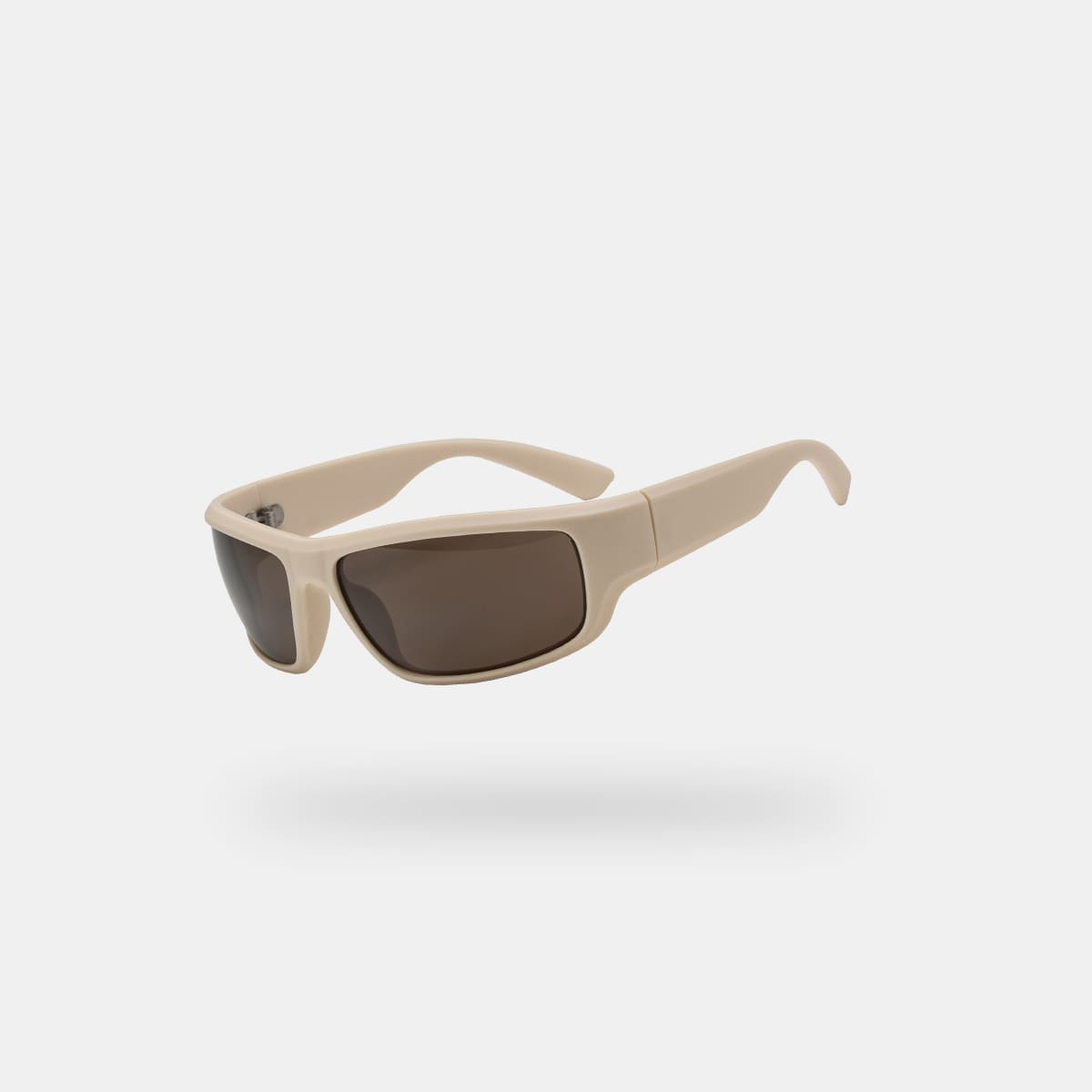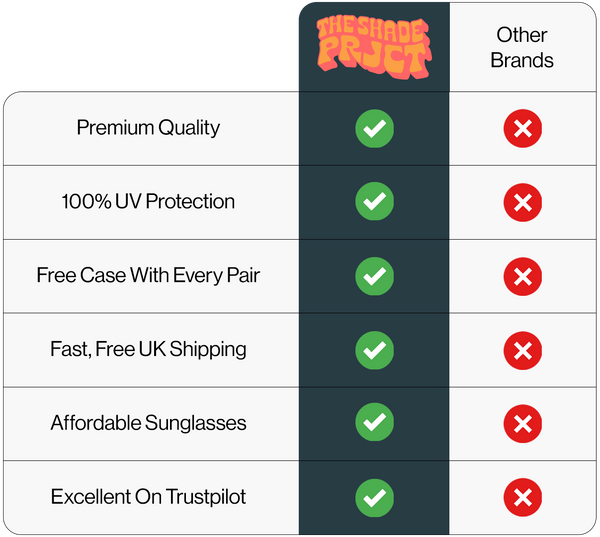Can You Customise Ray-Ban Sunglasses?
Yes – Ray-Ban allows you to customise your sunglasses through their official online “Remix” custom service (ray-ban.com) . This lets you tailor a pair of Ray-Bans to your exact preferences, which is a big step up from buying an off-the-shelf model. So, can you customise Ray-Ban sunglasses? Absolutely. Below we break down how Ray-Ban’s customisation works and what options you get, from lenses and frames to engraving personal touches.

(Screenshot of the Ray-Ban Remix customisation interface. The Ray-Ban online custom builder allows users to select a frame (here a Wayfarer), choose lens options, colours, and even add engraving, with a live preview of the customised sunglasses)
When you customise a Ray-Ban, you start by picking an iconic model (e.g. Wayfarer, Aviator, Clubmaster, etc). From there, Ray-Ban’s custom builder walks you through each aspect:
- Frame Colours: You can select the frame color and finish for the front, temples, and temple tips. Ray-Ban offers a variety of solids, patterns, and mixes for different parts of the frame. This means your customised Ray-Ban won’t look like anyone else’s – you could do a classic tortoiseshell or something bold like a two-tone blue and orange combo.

(Customising Ray-Ban Wayfarer sunglasses with blue transparent frame and temple options on the official website)
- Lenses: Ray-Ban lets you choose different lens types and tints. Options include standard tints, polarised lenses, gradients, mirrors, and even prescription lenses (ray-ban.com). If you need vision correction, you can order prescription Ray-Ban lenses as part of the custom build – single-vision lenses cost around £159 (for clear or sun lenses), and if you need progressives it’s roughly an extra £100 on top (prices accurate at time of writing). Polarised ray ban lenses are available too, typically adding about £47 to the price (Ray-Ban’s polarised lenses tech cuts glare for enhanced clarity). All customised lenses still come with Ray-Ban’s signature UV protection and quality.

(Ray-Ban Wayfarer sunglasses with green gradient lenses selected during lens customisation on the Ray-Ban website)
- Engraving on Temples: A really neat perk is the free engraving option. Ray-Ban allows you to add a personal engraving on the sunglasses’ temples (the “arms” of the frame). In fact, you can usually choose up to four positions for text – e.g. the inside or outside of the left and right temple – and pick from different font styles. Whether it’s your name, a special date, or a fun message, Ray-Ban will laser-engrave it for you at no extra charge. (One Reddit user did note that Ray-Ban sometimes refuses certain engravings if they don’t meet guidelines (reddit.com), but for the most part, you’re free to personalise your shades with a tasteful engraving.)

(Ray-Ban sunglasses engraving tool showing custom text “SHADEPRJCT” on the external temple arm with font options)
- Case Options and Engraving: Interestingly, you can even customise the case that comes with your Ray-Bans. The standard case is free, but during custom checkout you often have an option to upgrade to a premium case (for about £20) in a different material or colour. Ray-Ban also lets you engrave the case itself with a message! You can add up to two lines of text on the inside of the case flap, choosing from font options (honeyfund.com). This makes the unboxing experience extra special – for example, you could engrave “Happy Birthday” or a favourite quote inside the case. (It’s a great touch if you’re gifting customised Ray-Bans to someone.)

(Ray-Ban case engraving tool showing customised text “THESHADEPRJCT SUNGLASSES” on a beige sunglasses case with font selection options)
In short, you can customise Ray-Ban sunglasses in almost every way: frame, lenses, and personal inscriptions. The end result is a pair of Ray-Bans unique to you. Ray-Ban’s custom tool even has a 3D virtual try-on and live preview, so you can see your creation from all angles before buying. Keep in mind that customised Ray-Bans take a bit longer to ship since they’re made-to-order (often a couple of weeks). And because they’re personalised, the price will vary depending on the options you add (e.g. prescription or polarised lenses add cost as noted). The prices mentioned (like £159 for Rx lenses, etc.) are accurate at the time of writing – always double-check current pricing on Ray-Ban’s site as these can of course change.
Lastly, it’s worth mentioning that customising through Ray-Ban is an online process typically done on their website. If you prefer in-store help, some Ray-Ban flagship stores or opticians might assist with custom orders, but the easiest method is to use the Ray-Ban website’s “Remix” or “Customise” section which is hard to miss on a product page.
Can You Return Ray-Ban Sunglasses?
Now, after designing your dream pair of Ray-Bans, you might wonder: “What if I don’t like them? Can I return customised Ray-Ban sunglasses?” This is a very important consideration, because customised items often have different return rules than standard products.
For standard (non-custom) Ray-Ban sunglasses, the company has a 45-day return (ray-ban.com). You can return unworn regular sunglasses within that window (Ray-Ban even offers free returns by mail or in-store for those). So, if you bought a normal pair and changed your mind, returns are usually no problem.
However, for customised Ray-Bans, the policy is much stricter. According to Ray-Ban’s official FAQ, customised products (Ray-Ban Remix) cannot be returned or exchanged since they are made just for you (ray-ban.com). In other words, once they build your personalised Ray-Ban sunglasses, you’re generally stuck with them unless there's a defect. The only exception is if the product arrives defective or there’s a manufacturing fault – in that case, they will of course fix or replace it. But if you simply don’t love the colour you chose or the engraving, unfortunately you cannot return them just for a preference change.
This makes sense from Ray-Ban’s perspective: a bespoke pair with your name on it isn’t something they can resell. So, be very sure about your choices when you hit that order button on a custom pair. Double-check the frame size, colours, and engraving text. Ray-Ban even advises that you should be certain about your design, because once it’s made, “the product cannot be returned or exchanged unless it’s faulty.”
What if you buy Ray-Bans from somewhere else? The return policy will depend on the retailer. Authorised sellers (like Sunglass Hut, department stores, etc.) generally allow returns of standard sunglasses per their own policies. But for custom orders, most retailers follow the same rule – personalised items are final sale. If a third-party store offers a custom engraving service or similar, ask them about returns upfront.
So, can you return Ray-Ban sunglasses? – For non-custom ones, usually yes (within 45 days if from Ray-Ban direct, or per store policy) as long as they are unworn and in original condition. But for customised Ray-Bans, no, you typically cannot return them unless there’s a defect. Always check the specific return terms when you order, but it’s safe to assume your custom creation is yours to keep. If your custom pair does have a quality issue or arrives damaged, contact Ray-Ban customer support immediately – they may make it right even if a return isn’t allowed, especially for manufacturing errors.
Bottom line: plan your Ray-Ban custom design carefully, and you shouldn’t have any post-purchase regrets. But if you’re on the fence about a style or fit, it might be wise to try a standard model first (since those you can return) before committing to a personalised one.
Are All Ray-Bans Polarised?
This is a common question. Polarised lenses are popular for their glare-cutting benefits, and Ray-Ban is known for offering them – you’ve probably seen the little “Ray-Ban P” etching on some lenses. But are all Ray-Bans polarised? In short: No, not all Ray-Ban sunglasses come with polarised lenses by default (framesdirect.com).
Ray-Ban makes a wide range of sunglasses and each model often comes in multiple lens options. Polarisation is just one option. Many classic Ray-Ban models (Aviator, Wayfarer, etc.) are available in both non-polarised and polarised versions (framesdirect.com). The frames look the same; it’s the lenses that differ. If a pair is polarised, it will usually be explicitly labeled as such – for example, “Ray-Ban Original Wayfarer Classic Polarised Sunglasses.” On the lens itself, genuine Ray-Bans typically have a small “P” next to the Ray-Ban logo to indicate a polarised lens.
Polarised Ray-Bans have a special filter that blocks intense glare from horizontal surfaces (like water, snow, or roads). This gives you clearer vision in bright conditions. However, not everyone chooses polarised lenses – some people opt for non-polar for various reasons (polarised can make it harder to see LCD screens, for instance). Ray-Ban acknowledges this by offering both types.
Let’s use an example: the Ray-Ban Original Wayfarer. If you get it with the standard G-15 green lenses, those are usually non-polarised (just classic 100% UV protective lenses). That pair might cost around £150-£160 at retail. The same Wayfarer with polarised lenses might cost about £200+. In fact, one retailer lists the Wayfarer at £202 with polarised lenses (johnlewis.com), versus roughly £155 without – about a £47 difference. So, Ray-Ban clearly treats polarisation as an upgraded feature, not a given.
Another example: the Aviator. You can buy Aviators with regular lenses (often labeled something like “Ray-Ban Aviator Large Metal – Grey Green Lens”) which are not polarised, or with polarised lenses. Again, the polarised version will be priced higher and marked with that “P.” Ray-Ban’s own site often gives you a checkbox to add polarised lenses if available for that model, or you select a product variant that has them.
So to answer the question: No, all Ray-Bans are not polarised – you have to specifically choose a polarised variant in most cases. Many of Ray-Ban’s most popular sunglasses do offer polarised lenses as an option (Ray-Ban has over 70 years of research in polarised tech, and their polarised lenses block 99% of reflected glare (honeyfund.com). These lenses are fantastic for reducing eye strain and enhancing contrast on sunny days. But if you pick a colour or style that doesn’t explicitly say “polarised,” you’re likely getting the regular (non-polarised) lenses by default.
How can you tell if your Ray-Bans are polarised? Look for that “Ray-Ban P” on the right lens. Also, you can do a simple test: put on the glasses and tilt your head while looking at a digital LCD screen (like your phone). If the lenses are polarised, you’ll notice the screen change colours or darken at certain angles. If nothing changes, they’re probably not polarised.
In summary, polarisation is an optional feature for Ray-Ban sunglasses, not a standard one. Check the model description when buying. If you want polarised lenses for the added glare reduction, make sure to choose that version. And if you don’t need polarisation, you can save some money by getting the non-polarised pair. Ray-Ban clearly labels their products, so it’s easy to find either option.
Can I Change My Ray-Ban Lenses to Prescription?
Many people love Ray-Ban frames but wonder if they can put their own prescription in the lenses. The good news is yes, you can get Ray-Bans with prescription lenses. There are two scenarios here:
- Before Purchase (Ordering Prescription Ray-Bans): Ray-Ban allows you to order prescription lenses directly when you buy a new pair of sunglasses or eyeglasses from their site (ray-ban.com). In the customisation process (or even on many standard models), you’ll see an option to “Add Prescription Lenses.” You can enter your prescription details, and Ray-Ban will manufacture the lenses to your specs (single vision or progressive) and install them in the frame. This is an easy way to get prescription Ray-Ban sunglasses in one go – you pick the frame and the lenses all on Ray-Ban’s website. They even offer different lens types (clear, tinted, polarised, Transitions, etc.) with your prescription. So if you haven’t bought the Ray-Bans yet, simply order them with prescription lenses to begin with. The price will include the lens crafting (as noted earlier, around £159 for single vision standard, more for high-index or progressive). Ray-Ban will ask you to provide your actual RX (usually you upload a photo of your prescription or enter the numbers) during checkout.
-
After Purchase (Adding Prescription to Existing Ray-Bans): What if you already have a pair of Ray-Ban sunglasses and now you want to put prescription lenses in them? This is also possible, though Ray-Ban (the company) doesn’t directly take back your old glasses to reglaze them. Instead, you have a few options:
- Authorised Opticians/Services: Many optical retailers and services can cut custom prescription lenses to fit your Ray-Ban frames. For example, SportRx (an online optical retailer) offers prescription replacement lenses for Ray-Ban frames – you send them your glasses or provide the model, and they make lenses to fit (sportrx.com). They even ensure the lenses have the Ray-Ban logo etching if they use authentic parts. Other services like Lensology in the UK or your local optician can also do this. Essentially, they take your Ray-Ban frame and fit new prescription lenses into it, so you don’t have to buy a whole new pair of glasses.
- Ray-Ban Authorised Dealers: Some Ray-Ban authorised retailers (like LensCrafters or Sunglass Hut in the US, or Vision Express in the UK) may offer a send-out service to put RX lenses in your Ray-Ban frame. It’s often done through the same labs – in fact, Ray-Ban’s parent company Luxottica owns many lab services. According to Ray-Ban’s FAQ, you can return prescription Ray-Bans to their stores for lens replacement as needed (ray-ban.com) (this usually refers to warranty issues, but it indicates the capability is there).
- DIY Lens Ordering: Ray-Ban’s website doesn’t currently let you buy just lenses alone for an existing frame (they sell some spare parts like replacement nose pads, but not complete lenses to pop in yourself). However, you can order authentic Ray-Ban replacement lenses through some retailers or opticians and have them fitted (framesdirect.com). It’s highly recommended to have a professional fit them, though – Ray-Ban frames, especially metal ones, have delicate parts that can be damaged if you try to pop lenses in without the right tools.
So, you can change your Ray-Ban lenses to prescription either by ordering the glasses that way initially or by replacing the lenses after the fact. If doing it after the fact, it might involve an additional service cost. For example, a service might charge for the prescription lenses plus a fitting fee. SportRx or Lensology often charge significantly less than buying a whole new pair, so it can be cost-effective if you love your existing Ray-Ban frame.
One thing to note: not every Ray-Ban frame can accommodate every type of prescription. Very large or curved sunglasses (like wraparound styles) may have limits on the lens power that can be put in without distortion. But most classic Ray-Bans (Wayfarer, Aviator, etc.) are prescription-friendly – Ray-Ban even advertises which frames are RX-able. As a rule of thumb, if Ray-Ban sells that model with prescription options on their site, you can safely put prescription lenses in it.
Finally, check with an eye care professional if you plan to swap lenses in a pricey frame. They can advise if your prescription will work well in that frame and can ensure proper lens measurements (pupil distance, etc.) for optimal vision. But overall, fans of Ray-Ban will be happy to know you don’t have to give up style for vision – you truly can have both.
How Do Ray-Ban Sizes Work?
If you’ve ever looked at the inside of a Ray-Ban temple (the arm of the glasses), you’ll notice some numbers, like 50 22 150 (just an example). These numbers can be puzzling, but they’re simply the frame’s measurements. Ray-Ban sizes follow the standard eyewear sizing system: they’re defined by the lens width, bridge width, and temple length (all in millimeters).
Here’s how to decode Ray-Ban (or any glasses) sizes:
- The first number is the lens width (also called eye size). For example, “52” means each lens is 52 mm across at the widest point.
- The second number is the bridge width – the distance between the two lenses, basically the nose gap. E.g. “18” means an 18 mm bridge.
- The third number is the temple length – the length of each arm from the hinge to the end, e.g. “140” mm long temples.
So, a Ray-Ban with markings “52 – 18 – 140” indicates a lens width of 52 mm, bridge of 18 mm, and temple length of 140 mm. These specs together determine the overall fit of the glasses.
Ray-Ban typically offers certain models in multiple sizes (especially the popular ones). For instance, the Original Wayfarer comes in two eye sizes: 50 mm (often considered Standard) and 54 mm (Large). The Aviator comes in 55 mm (Small), 58 mm (Standard/Medium), and 62 mm (Large) for lens width. In those cases, the bridge is usually constant (Aviators all have about a 14 mm bridge (sportrx.com), and temple lengths might be similar too. It’s mainly the lens (and frame) width that changes the fit.
How Ray-Ban sizes work on your face: The lens width + bridge roughly give you the total width of the glasses. Ray-Ban classifies sizes often as Small, Standard (Medium), or Large fit. According to Ray-Ban, “Standard Size” fits about 90% of people (ray-ban.com). If you have a narrower face or want a tighter fit, a small size might be better; if you have a larger head or prefer an oversized look, go for large. Ray-Ban’s site has a handy Size Guide that even suggests using a credit card to gauge your size – because a credit card’s width is approximately the width of a Standard lens.
Here’s that credit card trick (a quick at-home measurement hack):
- Stand in front of a mirror and hold a credit card (short side vertical) up to the bridge of your nose, between your eyes.
-
See where the card’s edge ends relative to your eye corner:
- If the card extends beyond the outer corner of your eye, the glasses are too big – you likely need a Small size frame (visiofactory.com)
- If the card’s edge ends exactly at the outer corner of your eye, you’re in luck – a Standard/Medium size should fit well (visiofactory.com).
- If the card doesn’t reach the outer corner of your eye (falls short), the frame might be narrow on you – you may need a Large size (visiofactory.com)
This is a rough guide, but it helps. Additionally, if you already own glasses or sunglasses that fit you well, check their numbers (often printed on the inside of the temple or bridge). You can use those as a reference for choosing your Ray-Ban size. For example, if your current sunglasses say “55-18-140” and fit great, then Ray-Bans with similar measurements (say within 1-2 mm) should also fit you well.
In summary, Ray-Ban sizes work just like standard eyewear sizes: the numbers are lens width – bridge width – temple length in mm. To find what size you should buy, consider your face size and look at those numbers. The majority of people do well with Standard sizes, but Ray-Ban provides small or large options for many models to get a more tailored fit. And don’t worry – if you order a pair and the size isn’t right, you can exchange for a different size (as long as it’s not a custom-engraved one, as noted earlier!). Proper fit is key for comfort and style, so it’s worth taking a moment to understand those measurements before you choose your Ray-Ban.
Can You Customise Ray Ban Sunglasses? Frequently Asked Questions
Why are Ray-Bans so expensive?
Ray-Bans carry a higher price tag due to their quality and heritage. You’re paying for durable materials (like acetate frames and crystal lenses) and excellent craftsmanship – each pair undergoes strict quality checks. The brand’s iconic history and prestige also add to the cost. Essentially, with Ray-Ban you get proven lens technology (e.g. the G-15 lens) and a fashion statement built over decades, which many feel is worth the investment.
What are some Ray-Ban alternatives?
If you love Ray-Ban style but want other options, there are both high-end and budget alternatives. Brands like Oakley or Persol offer comparable quality and classic designs (Oakley for sport, Persol for vintage style). Newer companies such as Warby Parker or Blenders Eyewear make Wayfarer and Aviator-inspired frames at lower prices. You can also find affordable picks from brands like Polaroid (known for polarised lenses) or department-store lines. And of course, TheShadePrjct’s own collection offers on-trend sunglasses with full UV protection at a wallet-friendly price point – a great Ray-Ban alternative for everyday wear.
Are Ray-Bans polarised?
Not automatically. Some Ray-Ban sunglasses have polarised lenses, but not all. Ray-Ban usually offers each model in different versions – you have to specifically choose a polarised option. If a Ray-Ban is polarised, it will have a “P” etched on the lens next to the logo. Polarised Ray-Bans cut glare from water, roads, etc., which is great for driving or the beach. Always check the product description: if it doesn’t say “polarised,” then that pair likely has regular (non-polarised) lenses.
Are Ray-Bans worth it?
Ray-Bans are considered worth it by many due to their durability, timeless style, excellent UV protection, and premium build quality. They're a long-term investment offering reliable performance and classic designs that don’t go out of fashion.
How to change Ray-Ban lenses?
To replace Ray-Ban lenses, either visit an optician or use a lens replacement service. If changing lenses yourself, gently pop lenses out of acetate frames or carefully unscrew metal frames. It's safest to let professionals handle lens replacements.
How to change Ray-Ban nose pads?
To change Ray-Ban nose pads, carefully unscrew or pop them off using a small screwdriver or tool. Then attach new pads by screwing or snapping them into place. Opticians can quickly handle this if preferred.
How to tell if Ray-Bans are polarised?
Polarised Ray-Bans have a small "P" engraved on the lens next to the Ray-Ban logo. You can also tilt the glasses in front of an LCD screen; if the screen darkens noticeably, the lenses are polarised.
Can you customise Ray-Ban case?
Yes, Ray-Ban offers case customisation. During online ordering, you can upgrade to a premium case and add personalised engraving, typically two lines of text in your chosen font, making it perfect for gifting.
What Ray-Ban models are there?
Popular Ray-Ban models include Aviator, Wayfarer, Clubmaster, Round Metal, New Wayfarer, Justin, Erika, and Caravan. Each offers unique styling—from classic pilot shapes to vintage-inspired and modern designs—to suit different tastes and faces.
Can Ray-Ban replace lenses?
Yes, Ray-Ban lenses can be professionally replaced through authorised services or opticians. You can order authentic replacement lenses, ensuring the original quality and branding remain intact. Professional fitting is recommended.
Where to buy Ray-Ban sunglasses?
Buy Ray-Ban sunglasses from their official website, flagship stores, or authorised retailers like Sunglass Hut, Vision Express, department stores, or reputable online eyewear retailers to ensure authenticity and warranty coverage.
What are Ray-Ban Aviators sizes?
Classic Ray-Ban Aviators come in three sizes: Small (55mm), Standard/Medium (58mm), and Large (62mm). Standard fits most people comfortably. Smaller faces typically prefer 55mm, while larger faces or oversized styles suit 62mm best.
What size Ray-Bans should I buy?
Standard (medium) sizes fit most people well. For smaller or narrower faces, choose small sizes; for larger heads or an oversized look, opt for large sizes. Check measurements printed inside existing glasses as a reference.

